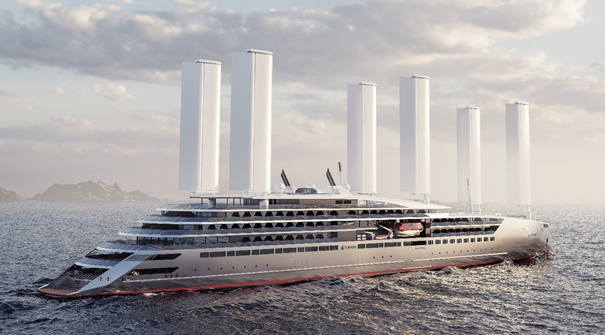PONANT's Swap2Zero: A Low-Carbon, Wind-Assisted Vessel Pushing Boundaries
Key Ideas
- BV grants approval in principle to PONANT for their innovative Swap2Zero twin-screw sailing passenger vessel, focusing on renewable energy sources and low-carbon design.
- Key features include 50% wind-assisted propulsion, one month of operational autonomy, solar panels, fuel cells, and advanced carbon capture systems.
- PONANT aims for optimal autonomy and sustainability, emphasizing compliance with regulations and decarbonization, with plans to commission the vessel by 2030.
- The collaboration between PONANT and FARWIND Energy on renewable hydrogen refueling solutions showcases a commitment to innovative energy initiatives in the maritime sector.
Classification society Bureau Veritas has granted approval in principle (AiP) to cruise ship operator PONANT for their cutting-edge twin-screw sailing passenger vessel concept named Swap2Zero. Designed for transoceanic voyages, the 186.2-meter vessel integrates renewable energy sources like wind, solar, and low-carbon fuels. PONANT's design aligns with BV's zero-emission goal, focusing on energy efficiency, sobriety, and renewable resource optimization. The vessel boasts 50% wind-assisted propulsion, 1,000 square meters of solar panels, fuel cells, and a carbon capture system.
PONANT's Newbuilding and R&D Director, Mathieu Petiteau, emphasizes the vessel's compliance with regulations, decarbonization strategies, and profitability. The project aims for high autonomy and sustainability, leveraging innovative technologies. The collaboration with FARWIND Energy on renewable hydrogen ship refueling solutions signifies a commitment to eco-friendly practices in maritime operations. PONANT and FARWIND plan to commission the Swap2Zero project and the first energy ship simultaneously by 2030, showcasing a forward-looking approach in the industry.
Topics
Fuel Cells
Sustainability
Renewable Fuels
Decarbonization
Collaboration
Innovative Technologies
Cruise Ship
Latest News
